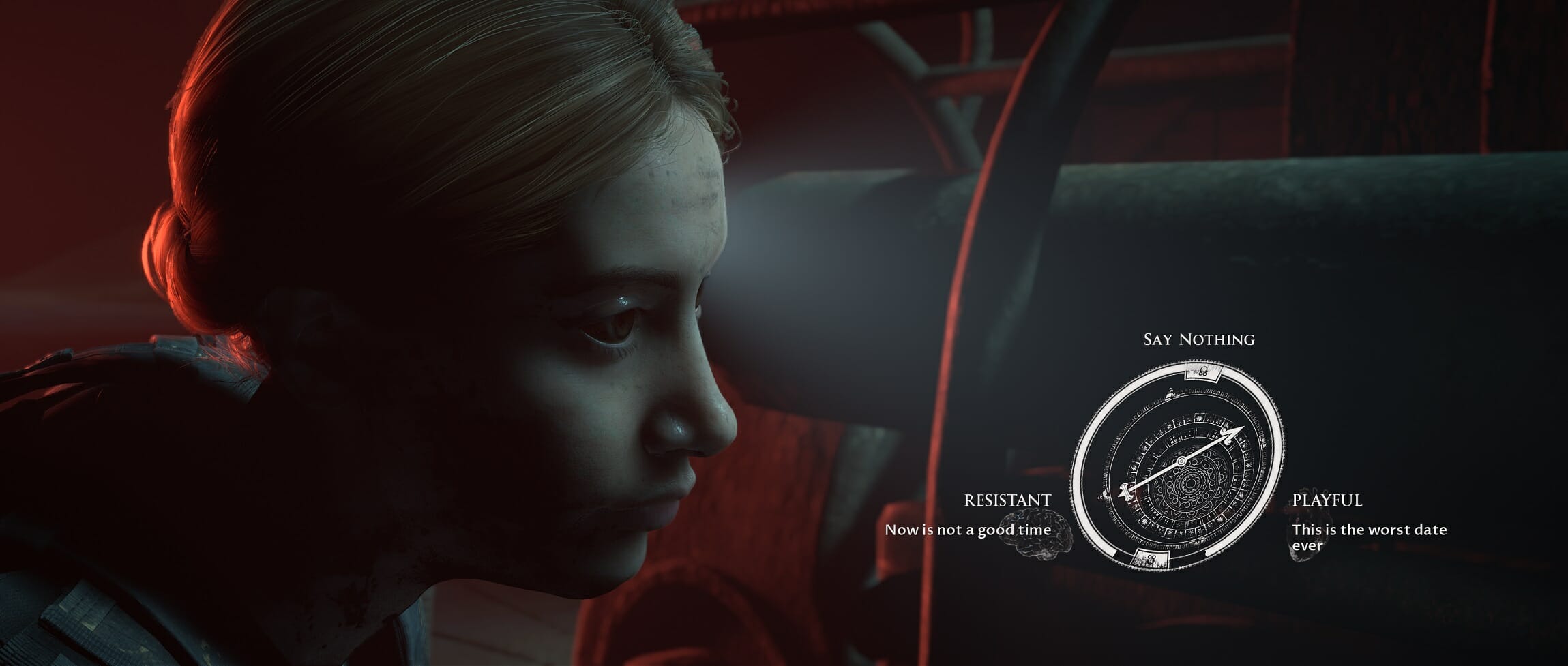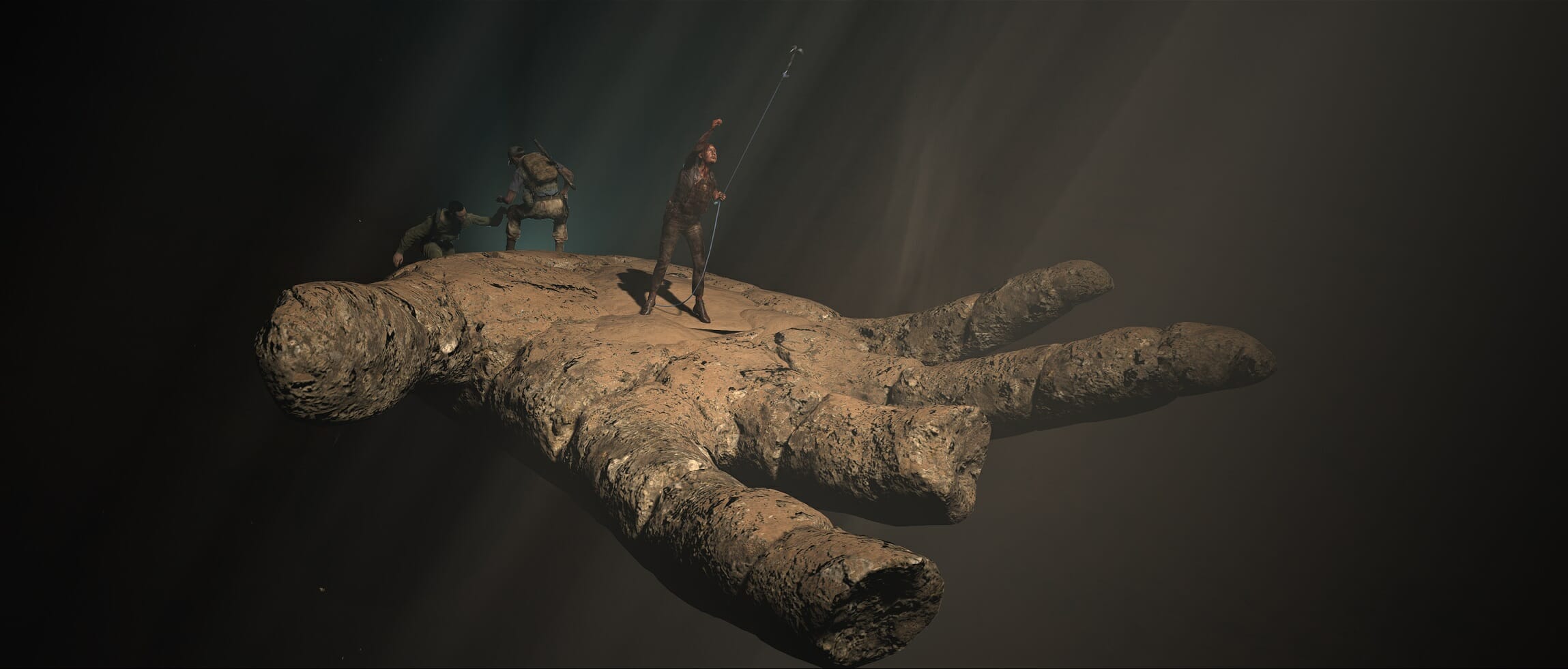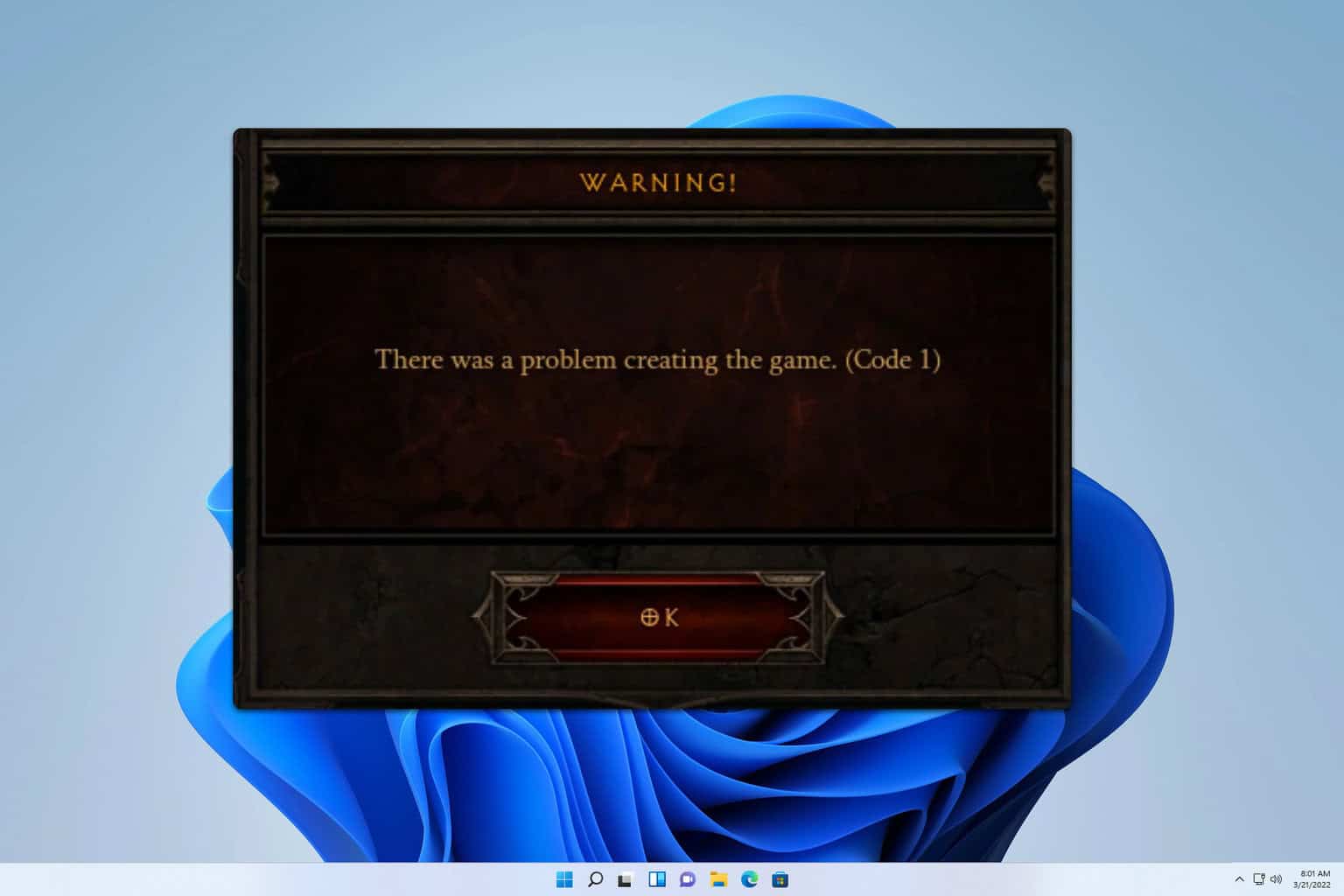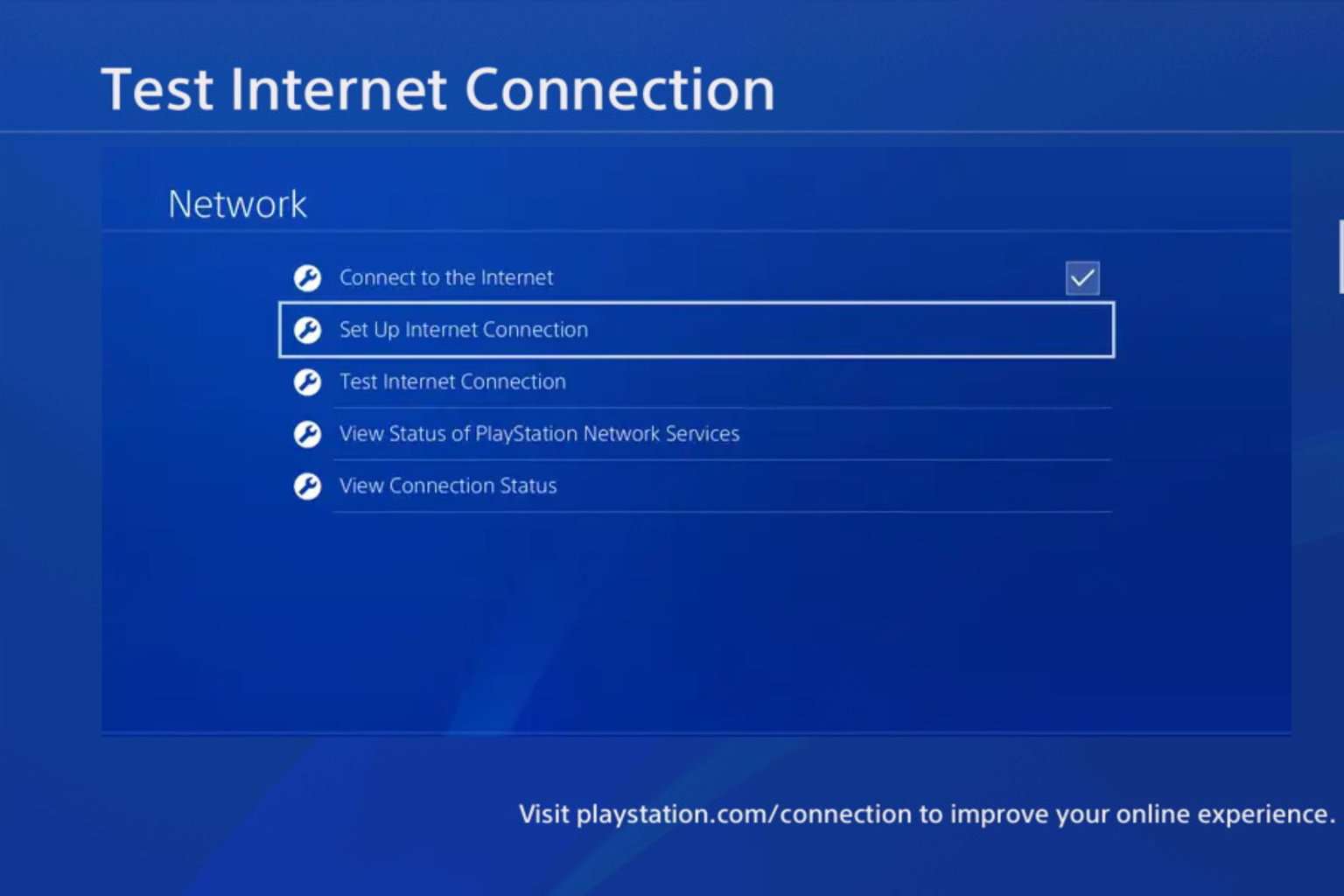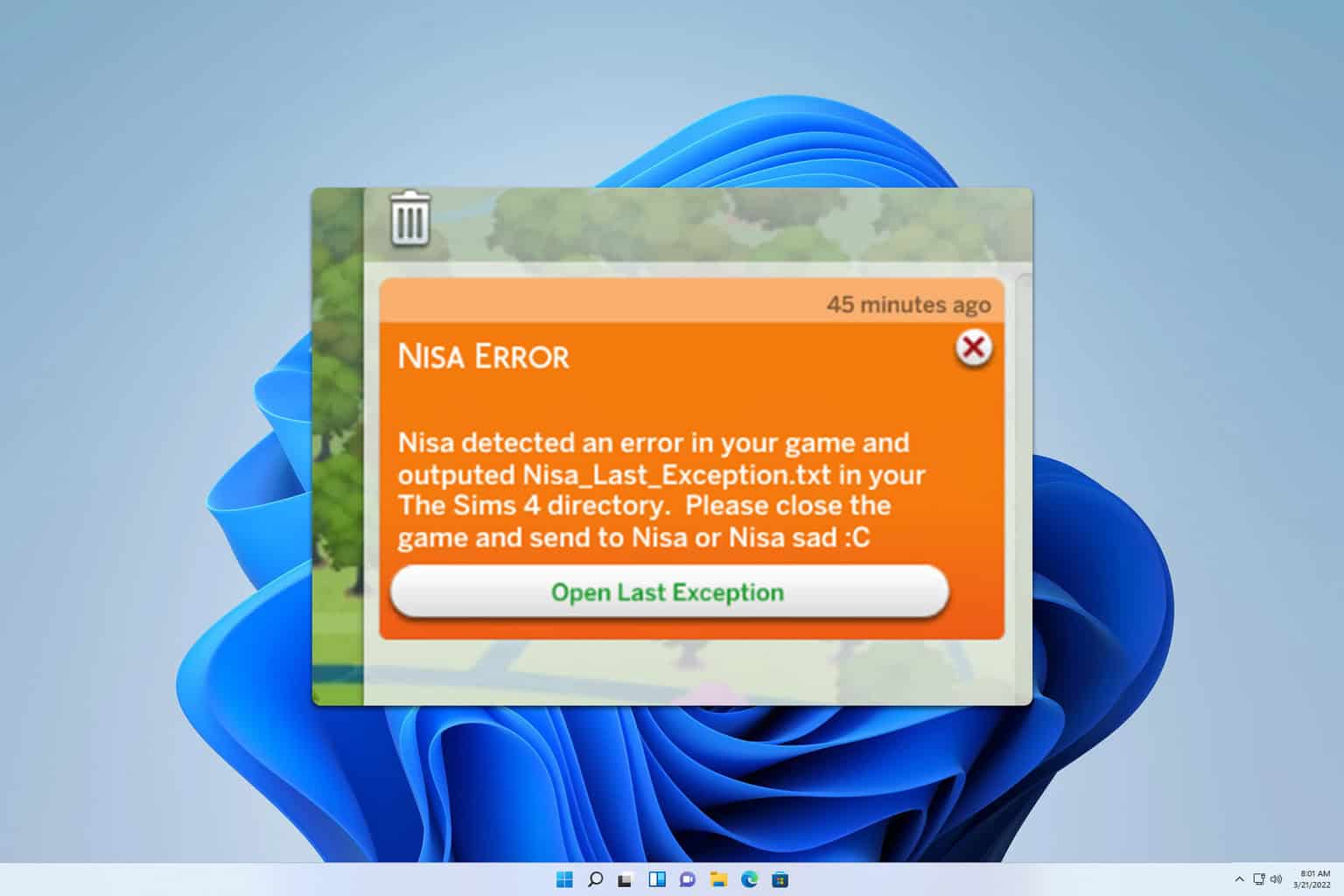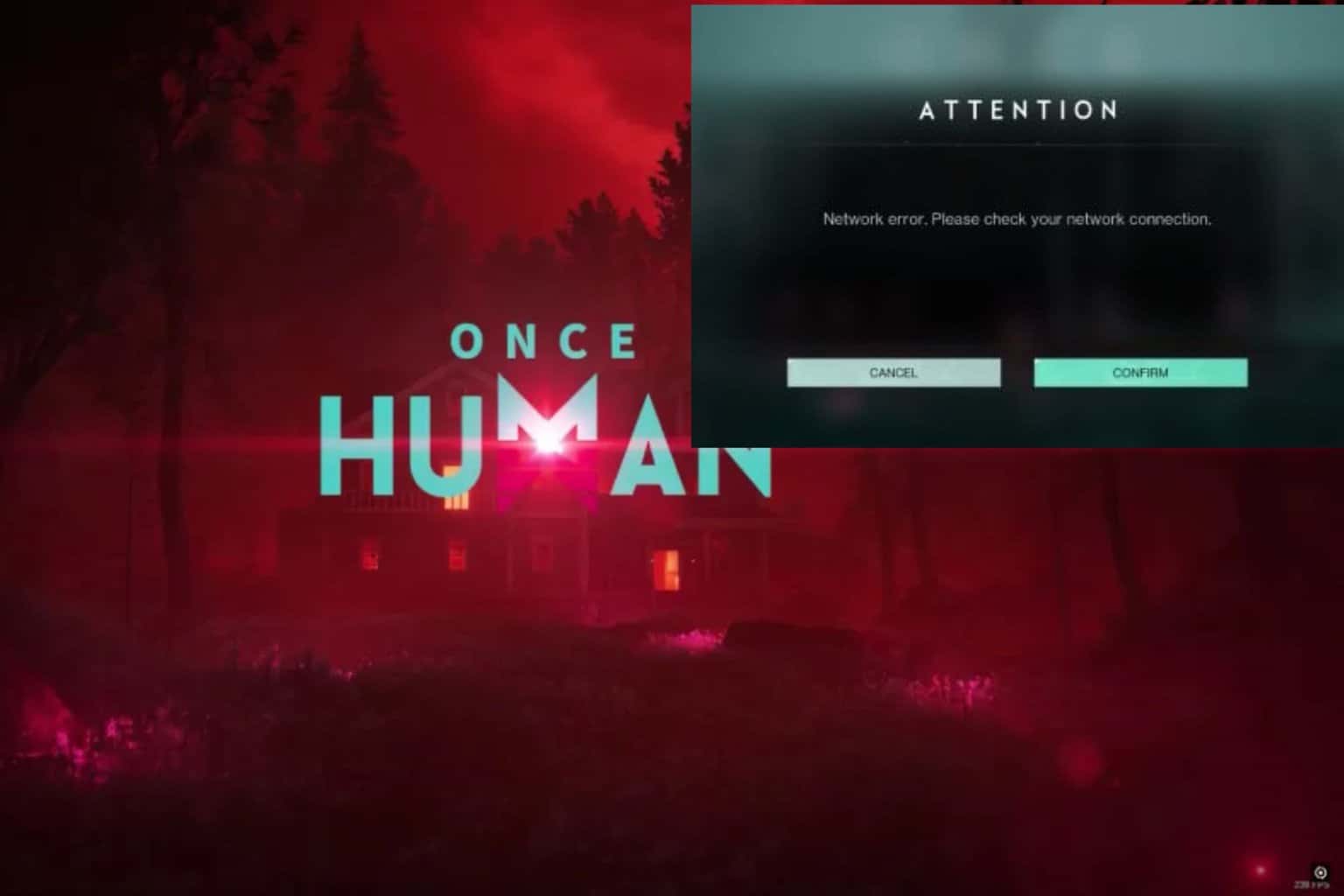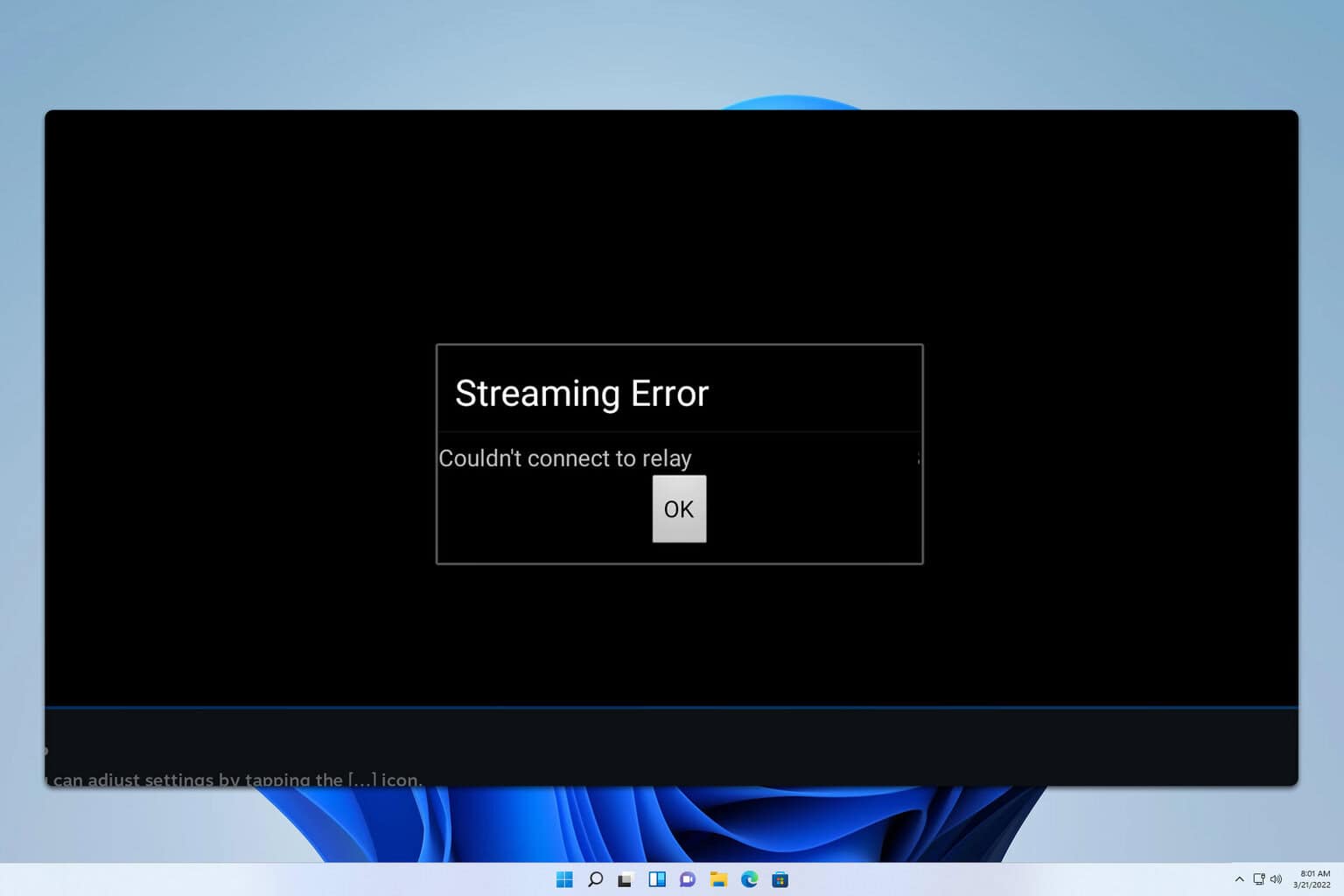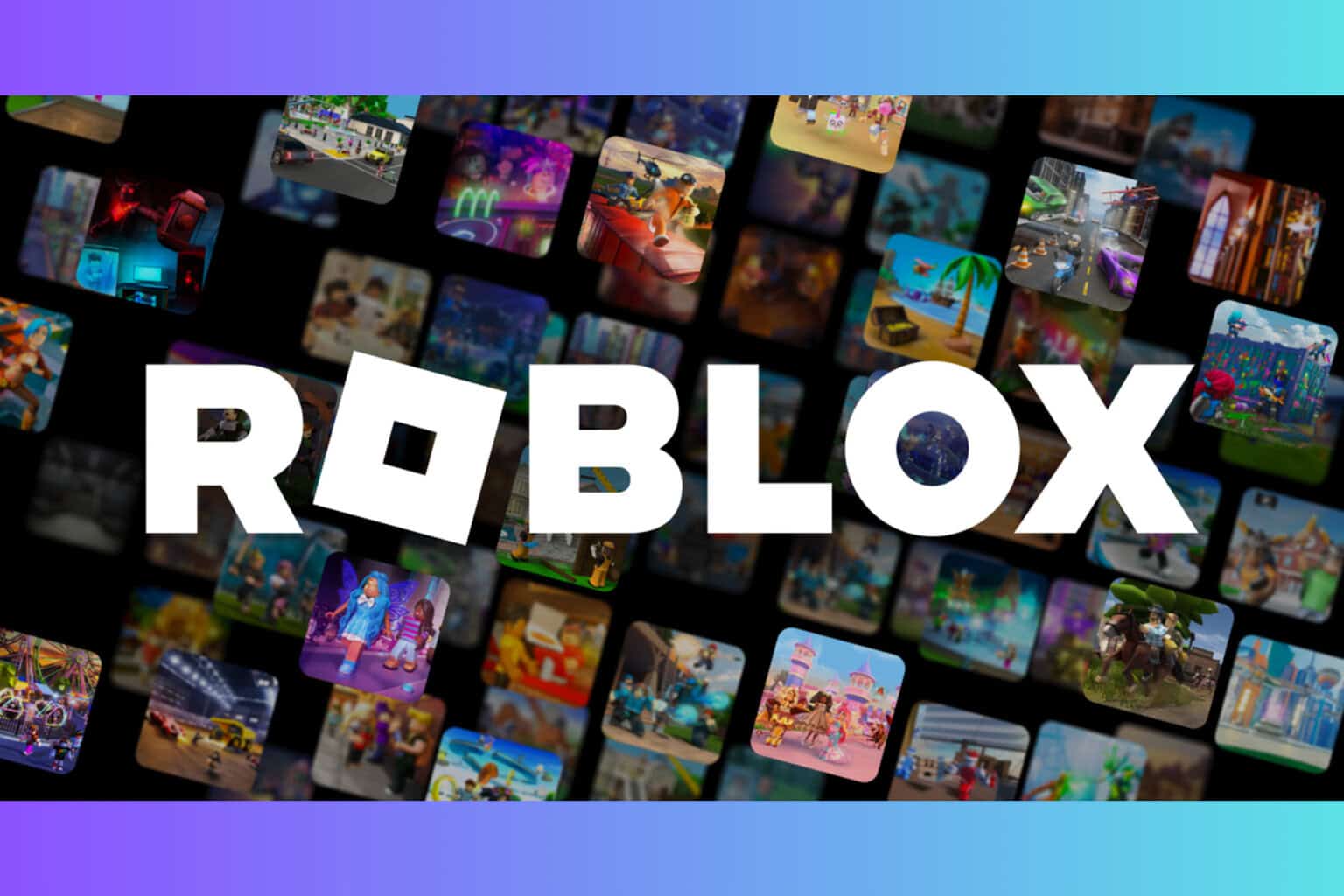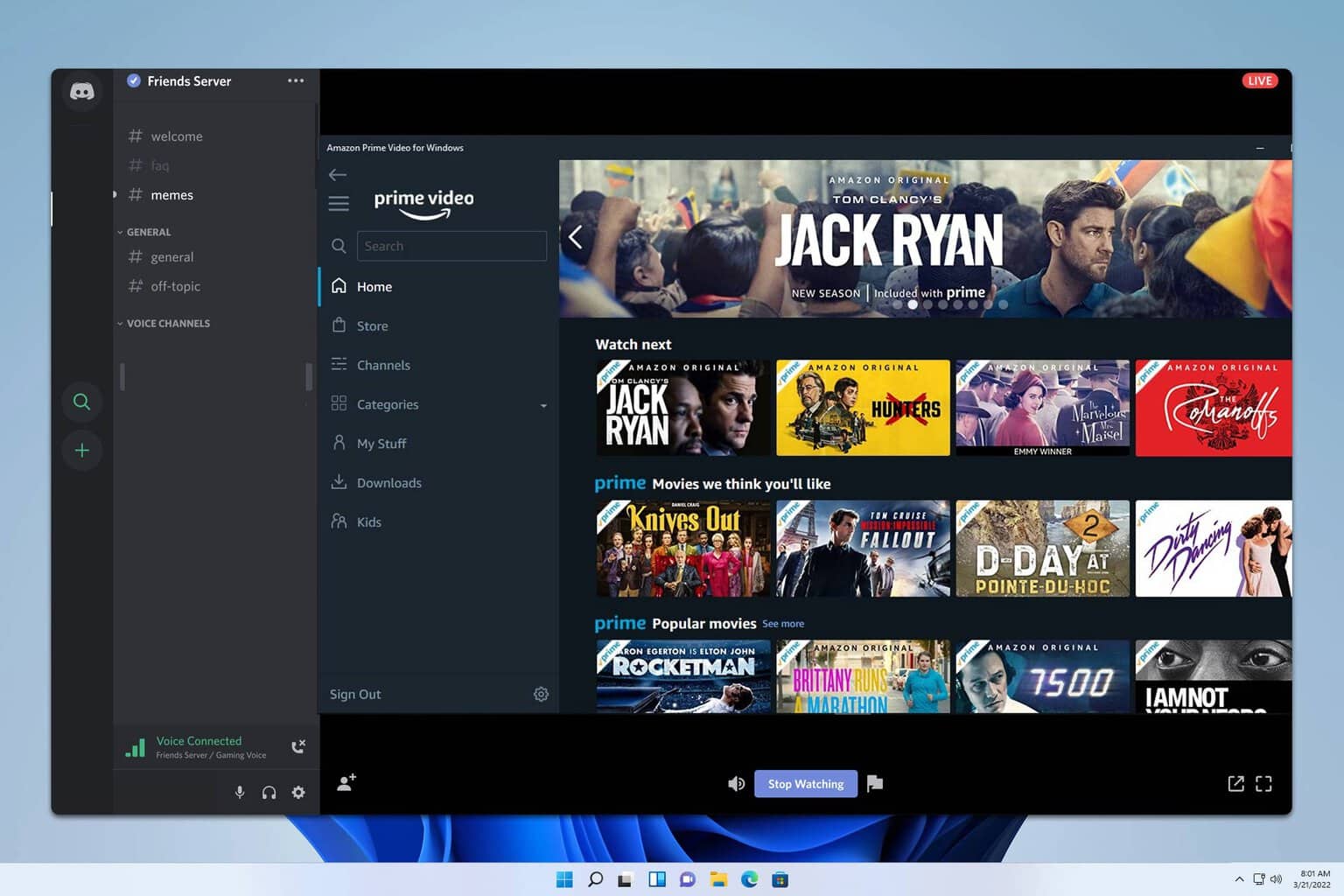The Dark Pictures Anthology: House Of Ashes game review
12 min. read
Updated on
Read our disclosure page to find out how can you help Windows Report sustain the editorial team Read more
Key notes
- The Dark Pictures Anthology: House of Ashes is an interactive drama survival horror game full of frights and delights
- It's set in ancient temples that house even older horrors who prey on the player
- Your actions actually feel important and impact the game in a meaningful way
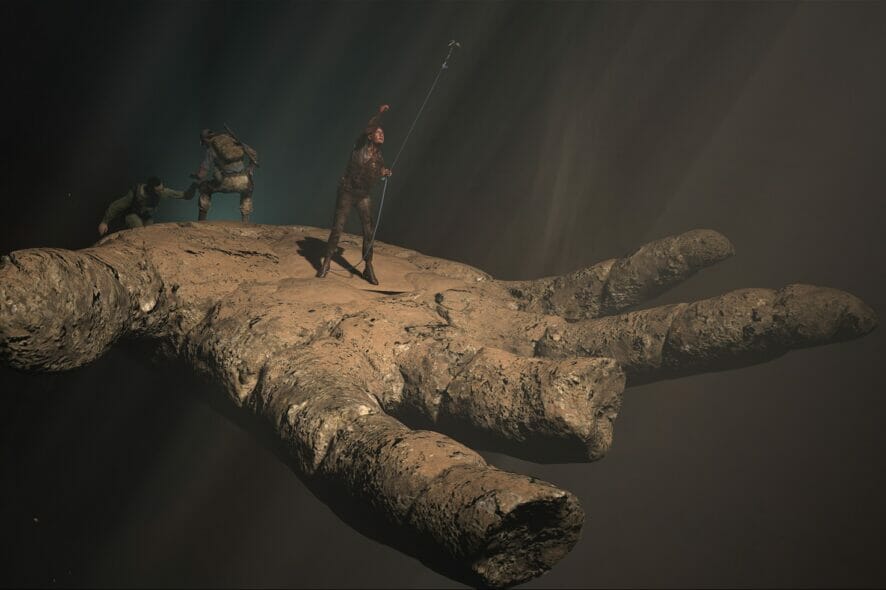
House of Ashes is the third installment of The Dark Pictures Anthology, a series of interactive drama survival horror videogames that each feature their own unique cast, location, and horrific story to tell.
It’s developed by Supermassive Games and published by Bandai Namco Entertainment and if you somehow missed knowing about this series’ existence, then you’ve surely heard about their Playstation exclusive Until Dawn or Little Nightmares II: Enhanced Edition.
I was a huge fan of Until Dawn but found the first entry in the anthology, Man of Medan, somewhat unimpressive. Even though it had some great ideas, the execution wasn’t always spot on. I can already tell you that they’ve come a long way since and that House of Ashes is a horror treat you should definitely not pass up.
Into the abyss – Story breakdown
House of Ashes starts with an interesting prologue taking back all the way in 2231BC, before the country was even called Iraq and when two ancient nations were at war while also dealing with famine and plague. We control a soldier in the Akkadian army who is tasked with sacrificing prisoners to hopefully appease the gods.
The blood dripping into the sand brings them more than what they bargained for however and it unleashes what seems like an evil curse that sweeps through the palace and leaves no one alive.
Fast forward to 2003 in the midst of the Iraq war and we lead a group of marines on a mission to find hidden weapon silos by Saddam. A fight breaks out between the US marines and Iraq soldiers and their bloodshed seems to trigger the curse once more.
The lucky few that survive tumble into the abyss and find themselves in the buried ruins of the ancient temple from the prologue. It doesn’t take long before they realize that the opposing army isn’t the only danger lurking in the dark and perhaps they’ll even need to learn to co-operate to survive the monsters that prey on them.
You’ll notice that I don’t include screenshots of the creatures in this review. I’d like to leave their appearance and true nature a secret for those that still want to play the game and discover the secrets for themselves. Due to the narrative nature of the title, I do believe we’ll dip our toes into some form of spoiler territory, but I’ll aim to keep the waters as shallow as possible.
A guiding hand
The curator is the only returning character, but his role takes place outside the game. He’s the one telling us these stories from his library full of horror tales and he’s ever watchful of our actions and decisions, teasing us with our mistakes or tempting us to count on him to lift the veil on what’s to come.
It’s an interesting set-up and just like in previous games from The Dark Pictures, you can find spoilers in the game itself. Hidden throughout the game are stone tablets that upon inspection show you a premonition of a possible character demise.
I recall the ones from Man of Medan truly giving some insightful info and warning me of possible deadly paths, whereas I mostly managed to keep my characters away from the deadly traps here. Mostly…
Still, it’s very much worth looking for all the secrets in the game. Especially the torn pages from a diary written by explorers who started digging at this archaeological site in 1947. They also went through similar tribulations as your current cast of characters, and you’d do well to learn from their mistakes.
Your choices matter
The way the story is told from multiple perspectives is simply brilliant, switching control from one player character to the next and with your decisions impacting what happens way down the line. Whenever a decision has to be made, you’ll get an option to follow your heart, your mind, or say nothing at all.
These choices impact the game in multiple ways. First of all, you have bearings, decisions like not calling in air support at the start of the game will have both an immediate impact as well as rippling effects down the line. But also finding certain items on your path may open up different outcomes later on.
The second impact is on how other characters perceive you. Are they friendly and do they trust you, or will they only be willing to bury the hatchet in your back? You can track your status with all player characters at any time during the game.
Quick on your feet – Quick Time Events
Other than these decisions that count on your intuition or forward-thinking, another element that makes a return are the Quick Time Events. Timed button presses that will very likely end in someone dying or getting discovered by the monsters if you fail.
Interestingly, House of Ashes has multiple difficulty settings and this aspect of the game is impacted the most. I preferred to use the easy mode that gives you a warning ahead of time when a Quick Time Event is coming and ample time to press because there are no take-backsies in this game.
As soon as you fail or succeed, the game will save so don’t think you can try to cheat your way out of a bad outcome. If you’re really willing to roll back on your actions, however, there is a scene selecting available from the main menu, and it will ask you if you want to overwrite your current save or create a new one.
No more tank controls
The last aspect of the gameplay is how you control characters. While it feels like over 50% of the game is watching cutscenes with minimal player input, you do get free control every now and then. And in Man of Medan, this was the true horror of the game.
You see, Man of Medan went with tank controls combined with static cameras from classic survival games. House of Ashes, on the other hand, has clearly listened to player and critic feedback and opted for a more natural feeling control scheme that leans closer to what people are used to from modern third-person action adventures.
Especially when you press RB and whip out your flashlight or lighter, it gives pretty accurate control of your characters. Dying because you didn’t press a button on time is on you but dying because your character walked into a trap that you were trying to avoid but that the game didn’t let you is extra frustrating. In House of Ashes, this is a thing of the past.
Masters of the camera
Like I have mentioned earlier, The Dark Pictures games are interactive drama games full of cutscenes. It’s no surprise then that there are a lot of cinematic influences here. From a monster close-up that resembles the famous scene of an Alien opening their mouth near Ellen Ripley, through monster-goggles like in Predator: moments where you see the action from the creatures’ point of view to make them seem extra menacing and untouchable.
There are even some classic film moments here that look and sound like old documentaries, whenever you find a journal page from 1947. I love how these framed the horrors as something that has been there throughout the ages of human technological evolution.
When the game really becomes spectacular is in action scenes with four or more playable characters in the same room and passing the control between them. The camera swoops across the large setpiece locations from one person to the next and makes good use of slow-motion to warn you of the transition. Seemless and downright impressive at times.
Great but campy acting
It borrows a lot from movie classics, most of all one of my favorite movies ever: Aliens. With the evolution of one Alien stalking a group of humans in cramped spaces like in the original, to a group of well-armed marines fighting a whole swarm of them. House of Ashes, is more of the latter, with much of the tension leaning on the action and body horror.
I won’t spoil how much these universes have in common to avoid ruining some of the surprises, but another thing they share is the campy acting. It’s never so frequent as to annoy and more often than not, characters keep a straight face, but when they do dip into one-liners and cheesy quotes, I actually caught myself smiling at the moment.
It’s clear to see how the series has improved with every new release and the facial animations are another clear checked box on that list. The humans express credible emotions, but it does threaten to dip into uncanny valley territory a few times, especially during close-ups.
The creatures are the ones that truly steal the show, however, with some of the best creature motion-capture I’ve seen in games and you can truly tell how much attention went into their design. (if you beat the game, there is even a bonus video that explains their creative process)
A visual feast
Which brings us to the graphics. The Dark Pictures: House of Ashes is a stunning-looking game, especially on the Xbox Series X with 4K visuals and HDR bringing life to even the darkest scenes. I played the game on an OLED TV set and with the game being as dark as it is, that really felt like it added a lot.
Speaking of which, I recall complaining about the dark environments in Man of Medan and sometimes not even being able to tell what I was doing, even in a darkened room without any light bleed polluting the screen output. I’ve not once suffered the same issues here and there is always a light source nearby to provide enough contrast.
The environments are a sight to behold and even made some sense after several playthroughs. By the end of my 3rd playthrough, I already had some sort of grasp on the temple layout.
While the Xbox Series X version loads scenes super fast, I did notice some HD textures settling in at the start of some perspective changes. It’s not all the time and it’s only a fraction of a second, but still noticeable.
How long to beat and complete
A single playthrough of House of Ashes will take around 5 hours if you spent a little time exploring and looking for secrets. But only playing the game once would be doing it a disservice.
There are so many possible endings and decisions that impact your story in a meaningful way, that I couldn’t help but boot the game up again right after beating it a first time with three survivors.
In my second playthrough, I managed to keep all five playable characters alive, and I was rewarded with a bunch of new scenes that I had missed in my first run. I applaud the developers for their clear vision here and I never once spotted a sequence error, unlike many other games with branching narratives.
To spice up your next playthroughs, I would advise playing it in Movie Night mode (pass the controller) or with other people over an online connection. It’s marvelously done and actually does add some extra weight to the experience, especially if you each have an assigned character that can die permanently.
Beating the game 100% and getting all achievements will take around five playthroughs or careful use of the scene selection feature and meticulous use of a guide. You’re looking at around 18-20 hours of playing the same game over and over again to get the full 1000G. But at least you’ll have seen every possible outcome.
If only they would have included a way to skip cutscenes you had already seen before, like what was present in Life Is Strange: True Colors, that would have been a huge help!
Final thoughts on House of Ashes
- Pros
- The many branching narrative paths are masterfully thought out
- The game looks fantastic and despite its setting; never too dark
- It's rare to actually feel the consequence of your actions and choices as much as in House of Ashes
- Cons
- Facial animation still dips into uncanny valley at times
- Really hard to complete 100% without a step-by-step guide
- No way to skip cutscenes
FINAL SCORE: 4.5/5
The Dark Pictures Anthology: House of Ashes managed to surprise me. Its predecessor had lowered my expectations somewhat but after multiple playthroughs, I’m honestly impressed with how great of a survival horror game this ended up being.
The action is fantastic, even though it mostly takes the control out of the player’s hands and opts to use cutscenes for maximum effect. It’s rare when games succeed in making your mistakes or successes actually feel like they impact the story in a meaningful way, but House of Ashes does just that.
It’s a horror experience I won’t soon forget and that I will possibly remember as fondly as the movie classics it borrowed inspiration from.
The Dark Pictures Anthology: House of Ashes costs around $29.99 and is available on Windows PC, Xbox One, Xbox Series X|S, Playstation 4, and Playstation 5. If you want to try before you buy: there is also a free trial that should give you a good idea.
*Disclaimer: reviewed on Xbox Series X, Review copy provided by the publisher.




